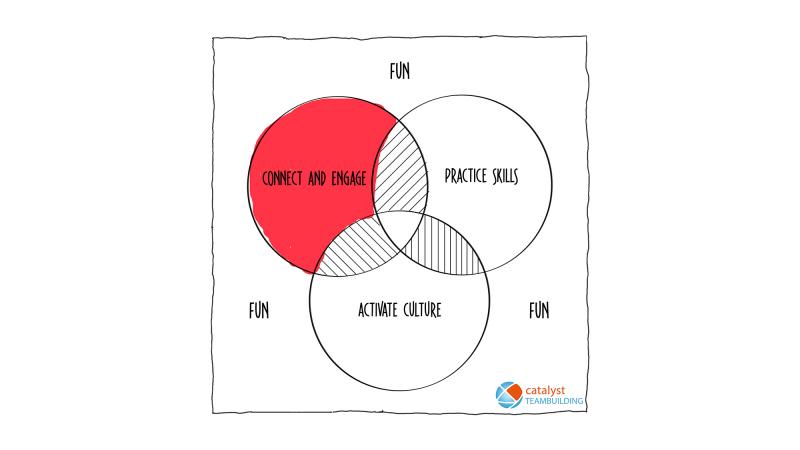The Catalyst Team building Model shows how you can use team building as a strategic instrument in developing your employees. This article discusses connections and engaged employees in more detail.
Connect & Engage
Many organizations are looking at how to deal with working from home. Some organizations are very clear about this and want everyone back in the office. In some organizations, it is the other way around, and employees mainly work from home. Of course, not all work can be done from home, and there is also work that you can do better at home. The best way depends on the organization itself, the position, but also the preference of the employee.
Strong culture leads to At-Office Work
In the ideal situation, employees want to come to the office as often as possible and, sometimes, choose to do tasks at home. The companies where employees like to go to the office have a strong culture. Employees have a good and almost friendly relationship with each other and, in many cases, are enthusiastic.

Employee engagement as a holy grail
"Being involved in your work" and "Employee engagement" are popular terms frequently referred to as a holy grail. What exactly do these phrases refer to?
Engagement goes beyond happiness at work or employee satisfaction. A recent Forbes article explains engagement describes employee engagement as the emotional commitment the employee has to the organization and its goals.
A recent Gallup article defines employee engagement as the involvement and enthusiasm of employees in their work and workplace. Employee engagement helps you measure and manage employees' perspectives on the crucial elements of your workplace culture.
3 Factors Affecting Engagement
Three main factors that influence engagement:
- Management: Trust in managers and leaders significantly impacts employees' organisational commitment.
- Meaningful work: To what extent do you feel your work matters and contributes to the whole?
- Relationship with other employees: Excellent employee relationships are essential for a good working environment.
For the employer, it starts with creating the right conditions. As an employer, providing moments when employees get to know each other better increases confidence in the people you work with daily. This applies to people at the same level in the organization and vertically.
Teambuilding as an empathic tool
A team-building activity is not going to produce enthusiastic employees. You can use it as an instrument to show that you care about your people. You show that you care about your people and provide a platform where employees genuinely get to know each other better. It strengthens the mutual bond and increases the involvement with each other. A well-chosen program creates positive employee relationships, increasing loyalty and ensuring moral support and commitment to each other.
When you think of a team building program, you quickly think of an activity in which you play competition against each other in teams. Now competition can be beneficial and also bring out the best in people. But especially in a team building program, we like to emphasize cooperation. So not necessarily in a competitive context. When it comes to connection and involvement, you get a more significant effect with a common goal where all teams solve a piece of the puzzle.





